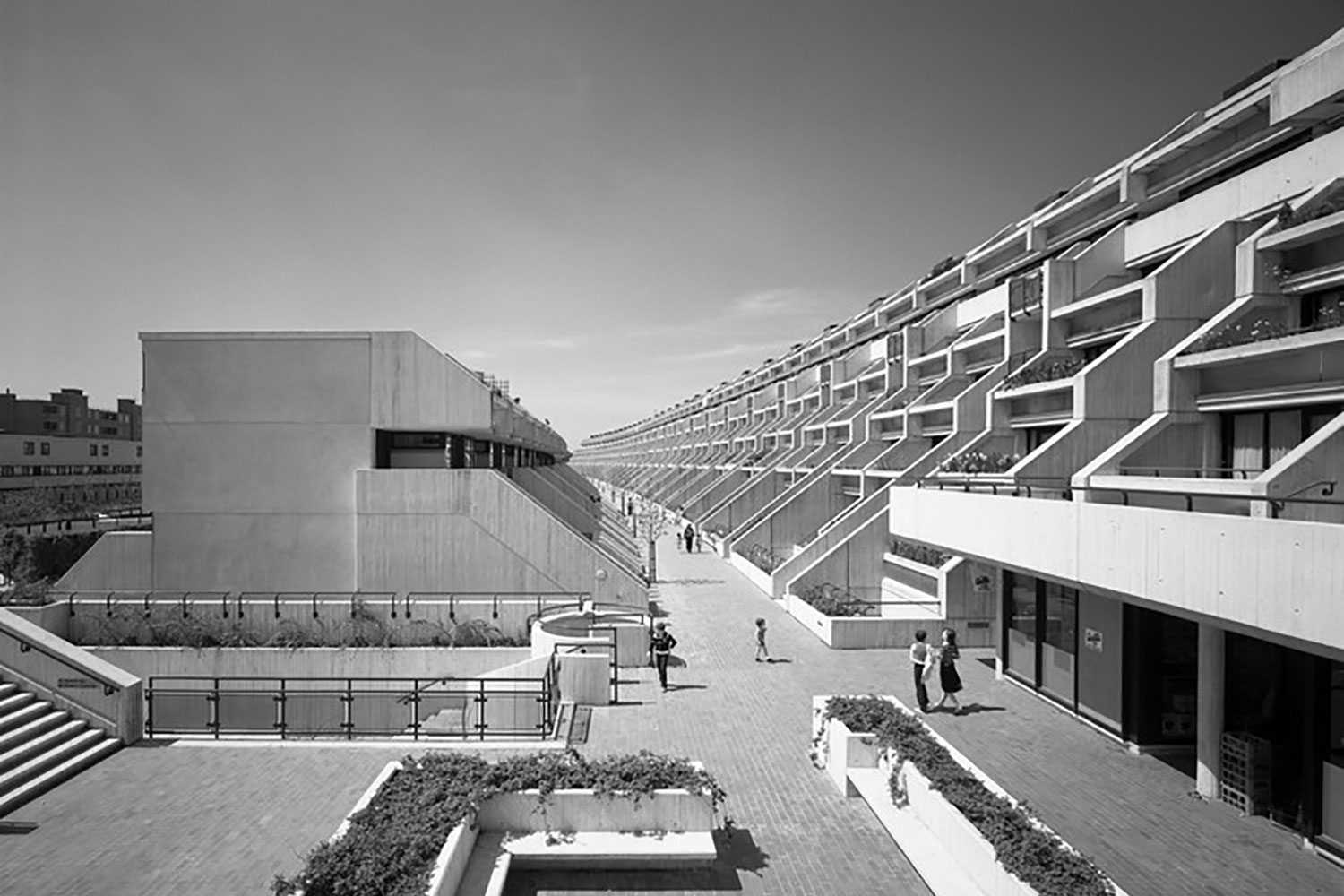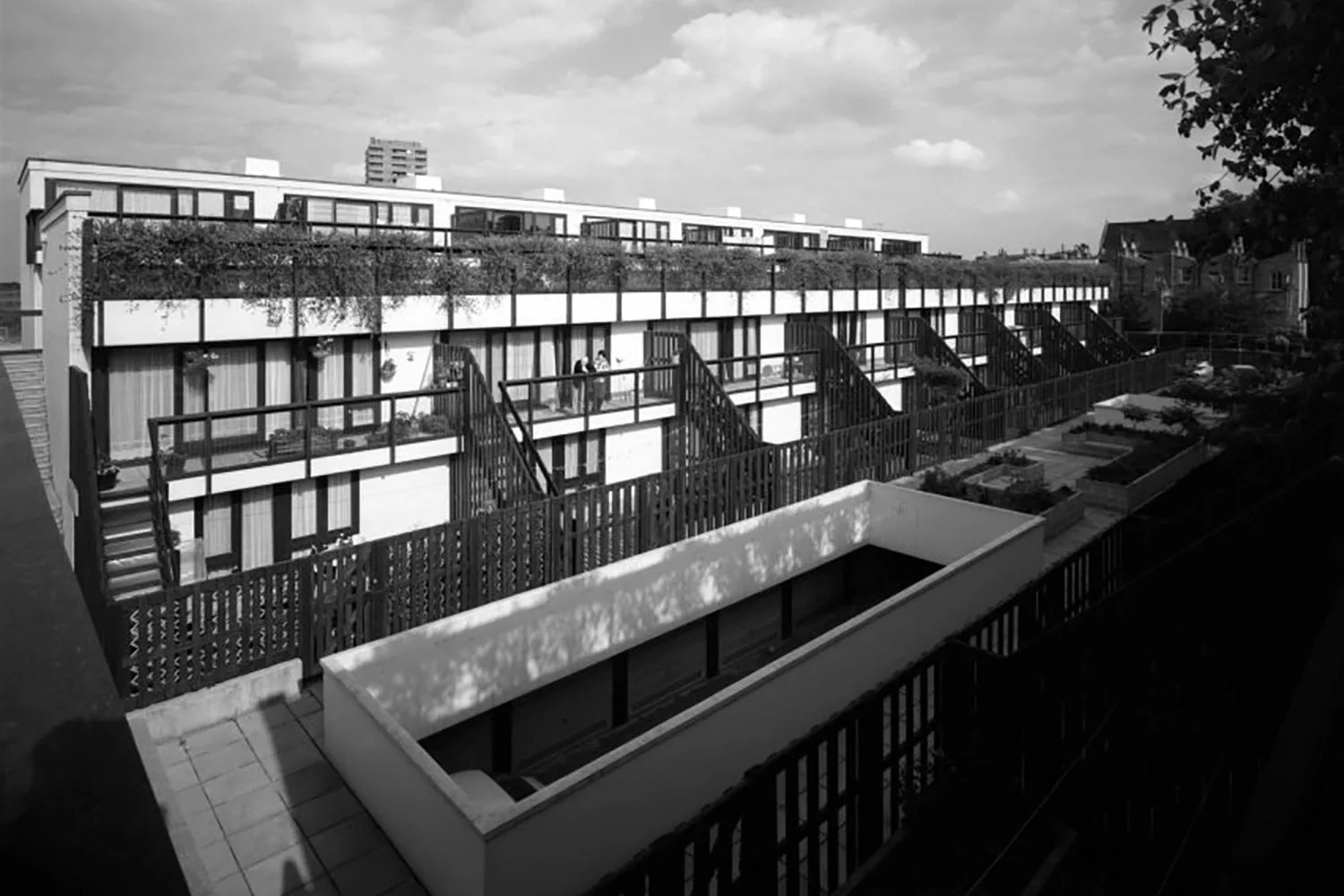neave Brown's riba gold medal
Neave Brown
Citation by Peter Barber October 2017
Last year this 87 year old legend of UK Architecture set the RIBA Jarvis Hall ablaze with a scintillating presentation of his unique and extraordinary oeuvre. It was standing room only and the enraptured audience - students through to old buffers, the great and the good, residents of his buildings, acolytes all - hung on his every word.
They lapped up the images of his projects - buildings and streets, terraces, roof gardens and public parks alive with greenery and colour... a magnificent backdrop to people’s lives.
Neave Brown’s status has grown and grown over the decades so that now, in his later years, he finds himself an ‘ in-demand’ (if rather unwilling) architectural celebrity.
He has been an inspiration to successive generations of architects and students of urbanism. We can see the influence of his ideas and the imprint of his built work in much contemporary urbanism and architecture.
Think of the section of BIG’s famous ‘Mountain’ in Copenhagen and compare it to Neave’s Medina urban quarter in Eindhoven. Think also of Neave’s lower-rise street-based approach to urban housing - unfashionable, derided even, in post war Europe but now pretty generally accepted and exemplified in projects across the world from our own Donnybrook Quarter to Borneo Sporenburg, by the likes of Atelier BowWow in Japan, Neutelings Riedijk in Holland and Aires Mateus or Alvaro Siza in Portugal.
The award of the RIBA Royal Gold Medal to Neave Brown is absolutely timely given the chaos and deep misery created by successive governments’ laissez faire attitude to housing and urbanism. It signals loud and clear the RIBA’s commitment to the social project of architecture, the redemptive capacity of buildings and our belief that the city is both a work of art and a powerful agent in the liberation of people and the improvement of their lives.
Alexander Road Estate, Camden, under construction in the 1970s



